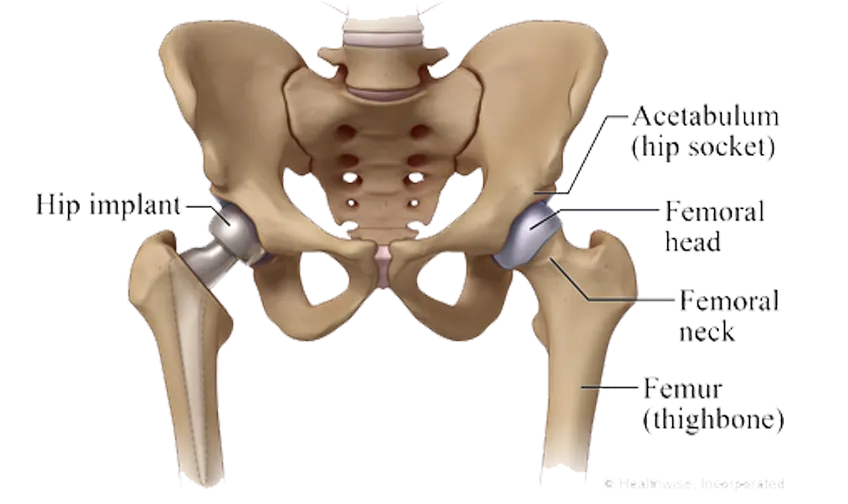Partial Hip Replacement Surgery

Partial hip replacement surgery, or hemiarthroplasty, involves removing and replacing the ball of the hip joint with an artificial implant. Unlike total hip replacement, this procedure does not involve replacing the socket. It is primarily used to treat specific types of hip fractures, particularly when the femoral neck is damaged but the socket remains intact.
Alternative Name for Partial Hip Replacement:
Scientific name: Hemiarthroplasty
Hip: Where the top of the femur (thighbone) fits into the pelvis.
Surgery Procedure Type:
- Preparation for Partial Hip Replacement Surgery
- Medication: Inform your doctor about all medications you are currently taking, especially if you have diabetes or any other health conditions.
- Lifestyle changes: It’s important to quit smoking as it slows down the recovery process. Alcohol consumption should also be limited or stopped.
- Pre-surgery health check: A day before surgery, key health indicators such as heart rate, body temperature, and blood pressure are monitored.
- Fasting: On the day of surgery, you should not eat or drink anything for at least six hours before the procedure.
How is Partial Hip Replacement Surgery Performed?
Partial hip replacement typically lasts 1-2 hours. During the procedure, prosthetic implants are used to replace the ball of the hip joint. The implant comprises a metal stem, which attaches a ceramic or metal ball to the femur. There are three types of implant fixation:
- Cemented: The implant is fixed to the bone using cement.
- Uncemented: The implant has a porous coating that allows the bone to grow into it over time.
- To Hybrid: A combination of cemented and porous-coated implant parts.
Post-Surgery Follow
After surgery, you will receive painkillers and medications through an IV to prevent infection, nausea, and blood clots. The effects of anesthesia will numb the lower body for a time.
To keep your hip in the correct position, cushions may be placed between your legs. Compression stockings and sleeves might also be used to prevent blood clots by improving circulation in the legs.
Risks and Complications
While partial hip replacement is generally safe, there are some risks and complications to be aware of:
- Blood clots: Clots can form in the leg veins, potentially becoming dangerous if they block blood flow to the heart or lungs.
- Infection: Surgical incisions near the hip joint can become infected. Infections near the prosthesis are more serious and may require antibiotics.
- Dislocation: The implant may become dislodged if the body is placed in certain positions.
- Fracture: Small fractures can occur during surgery. Most heal on their own, but larger fractures may require additional treatment.
- Leg length discrepancy: A slight difference in leg length is common but usually correctable.
- Implant loosening: Though rare, the implant may loosen over time.
Recovery After Partial Hip Replacement Surgery
Recovery involves careful movement to avoid dislocating the hip. You will need to follow specific precautions, such as avoiding twisting movements and keeping your head, shoulders, knees, and feet aligned forward. Pain medication will be reduced over the first few weeks, and you will need to continue taking medicines to prevent blood clots.
During recovery, you may need assistance to move around and will likely use crutches or a walker. Full recovery can take up to six months.

